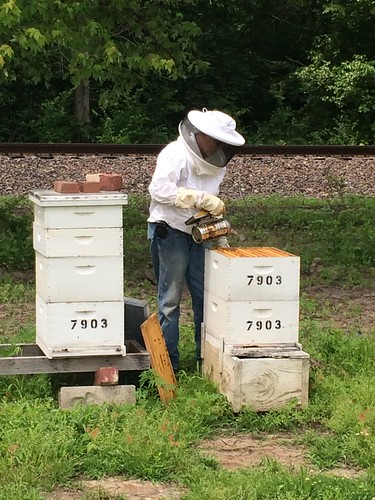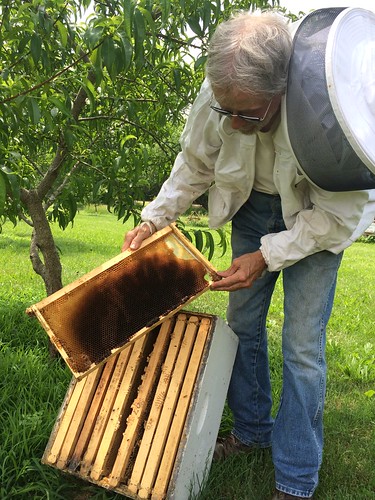
This post is part of a disaster assistance program feature series on the USDA blog. Check back every Wednesday as we showcase stories and news from USDA’s Farm Service Agency.
Larry Loveless of Gillespie, Ill., works full-time at a factory by day, but spends his evenings and free time beekeeping.
The harsh winter of 2013 brought devastating losses to many livestock producers, including beekeepers. Loveless lost more than half of his colonies due to several days of sub-zero temperatures. He started with 20 colonies and was down to only seven by the end of the winter.
"I've lost a few colonies here and there, but I've never experienced this horrific of a loss," said Loveless, whose hives were already at a disadvantage because of last year's drought.
"The bees produced plenty of honey storage to live on through the winter, but they started eating their storage earlier than normal because of the drought, leaving me with only one 5-gallon bucket of honey to sell last year," said Loveless.
Generally, he gets several 5-gallon buckets and some hives can produce up to 75-150 pounds of honey.
The winter storms left Loveless' remaining colonies weak, which means another year of below average honey production. Before the 2014 Farm Bill was in place, Loveless coped with the loss by splitting three of his hives, which eventually turn into six fully functioning hives. The problem with splitting hives is that they won't produce honey during the first year.
Now that the Farm Bill is in place, Loveless plans to start rebuilding the hives with help from the USDA Farm Service Agency (FSA) Emergency Assistance for Livestock, Honeybees and Farm-Raised Fish Program (ELAP). ELAP provides assistance for the loss of honeybee colonies in excess of normal mortality if the loss was caused by an eligible adverse weather event, which includes winter storms.
Loveless learned about the FSA program through his local bee club when Mike Eggerman, Clinton County Executive Director, made a presentation to the group.
"I had nothing to lose so I visited the Macoupin County FSA office in May to sign up for the program," said Loveless.
He plans to use the assistance to buy bees, equipment and sugar for feed. He wants to rebuild his colonies so he can produce enough honey for his existing customers.
While Loveless' operation is small in scope now, he plans to expand his colonies when he retires and is entertaining the idea of selling his honey at local farmer's markets.
Since disaster assistance sign-up began, USDA has received more than 112,746 applications. As of June 5, USDA has paid more than $506 million to help American farmers, ranchers and their families devastated by severe losses. Producers impacted by drought, snowstorms and other unforeseen weather events should contact their FSA county office to make an appointment and learn if they are eligible for disaster assistance.

